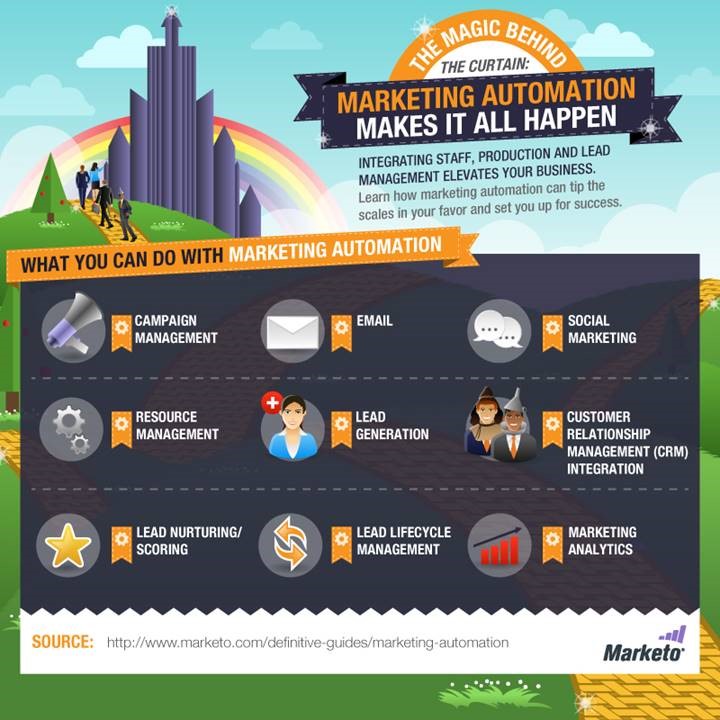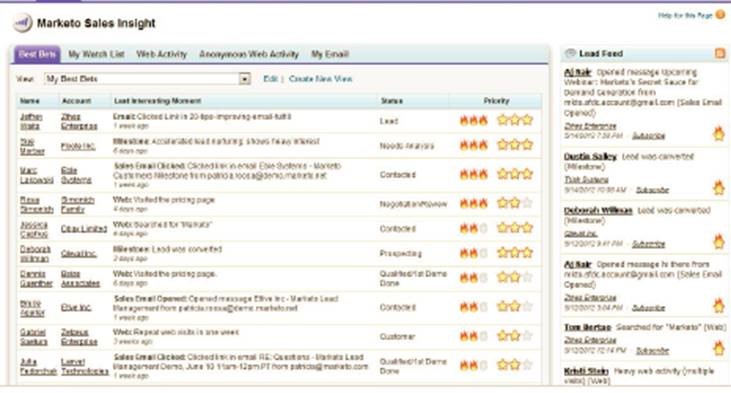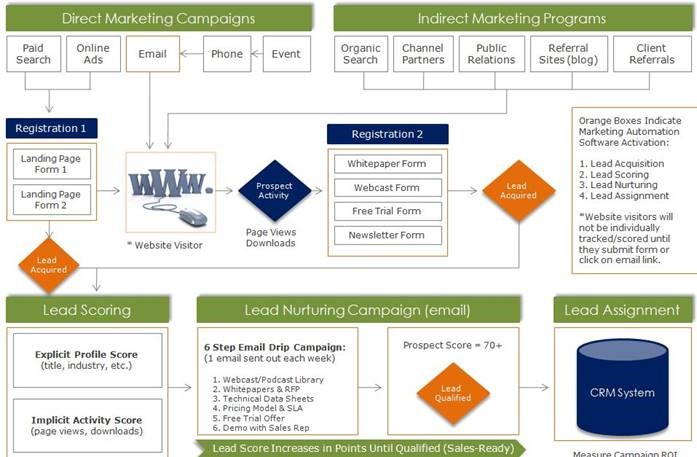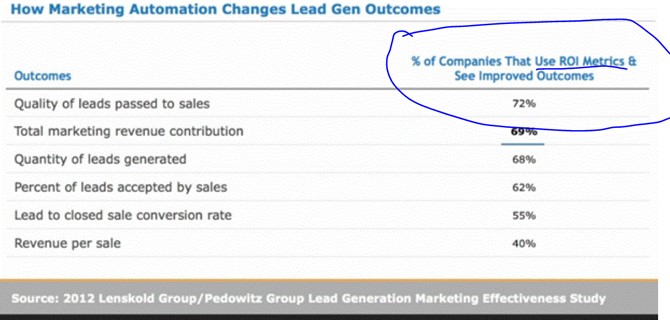Marketing Automation 101 — Streamlining and Measuring Marketing Tasks and Workflows
Inline below is a quick primer on Marketing Automation. This post reviews:
- What is Marketing Automation
- Benefits of Marketing Automation
- How Marketing Automation works
As well, there are a series of publications from Marketo that are longer, but super interesting, reads. If you review the note below and read the Marketo Definitive Guides, you will have an excellent working understanding of Marketing Automation. You can find a link to the Marketo Definitive Guides at: http://www.marketo.com/definitive-guides
I also recommend the book called Manufacturing Demand, which is a free download. It is written by David Lewis, who is an expert on Marketing Automation, and an excellent resource for lead management and aligning marketing & sales; this is required reading on my team: http://manufacturingdemand.com/
WHAT IS MARKETING AUTOMATION
Marketing Automation is a technology that enables marketers to use marketing techniques that improve the quality of leads handed to sales. It enables marketers to track and align customer behavior with purchase cycle stage, and use this information to provide relevant responses, such as content; calls to action; and offers. Common practices which Marketing Automation enables are:
- Lead Generation
- Segmentation
- Lead Scoring
- Lead Nurturing
- Cross Sell/Upsell
- Customer Retention
- ROI Measurement

The term “Marketing Automation” is widely misunderstood, with a common misinterpretation being that it is a term that applies to all marketing information systems. In fact, “Marketing Automation” is a very specific term that refers to a process of “Revenue Marketing” whereby the marketing function focuses on creating “MQLs”, or “Marketing Qualified Leads”; and the quality of the MQL output is measured by “SALs”, or “Sales Accepted Leads”.
The process of creating an MQL is a form of gamification for the marketers themselves because leads do not become MQLs until they have achieved a minimum threshold “Lead Score”, which will typically require a multiple of interactions to be achieved. The accumulation of marketing “touches” adds to a prospect’s Lead Score until (based on organizational experience) the Lead Score is sufficiently high that the prospect is qualified as a genuine sales lead and transferred to the Sales CRM system. Executed correctly, this creates a system wherein Marketing generates fewer, higher quality leads and Sales trusts the leads to convert, resulting in a higher Lead Acceptance rate and generally higher close rates for the organization. Overall, the focus on Total Quality in the marketing system creates improved efficiency and WHI across the organization. Here’s what Marketo leads look like in a CRM system:
HOW MARKETING AUTOMATION WORKS
Marketing Automation works by analyzing customer behavioral information and combining it with pre-programmed data collection and communication tools. The Marketing Automation platform follows prospects through the customer journey and delivers relevant content based on the prospect’s behavior. It keeps track of where the prospect is in the purchase cycle, and at the appropriate time sends the lead to sales with a summary of the prospect’s behavioral history. Here’s an example of an automated campaign:
BENEFITS OF MARKETING AUTOMATION
Benefit #1: How Marketing Automation Benefits Sales
Marketing Automation improves marketing effectiveness by allowing marketers to quickly assess and respond to customer behavior, nurturing relationships with leads that are not yet ready to buy or have a sales conversation. Marketing automation also enables marketing to recycle leads that are un-qualified and nurture them until they are ready to have a sales conversation. Done well, nurturing can result in 50% more sales leads at 33% lower cost per lead.
Benefit #2: Improving Customer Lifetime Value
Marketing Automation helps retain and extend customer relationships. Marketing Automation enables marketers to provide on-boarding and training programs, pitch cross-sell and upsell opportunities and identify customers that are at risk of not renewing.
Benefit #3: Improved Customer Experience
Marketing Automation enables marketers to quickly provide content that is relevant to a prospect, building the company’s reputation as a trusted advisor. It remembers previous customer interactions so customers do not have to re-register or spend time re-explaining to a salesperson the products they are interested in. Most importantly, it allows customers to engage with the company on their own terms and their timing, turning interactions from disruption to helpful exchange.
Benefit #4: Reduced Costs
By minimizing waste and redundancy caused by manual campaign execution, Marketing Automation can cut expenses. Additionally, marketing automation gives companies in-depth insight into campaign effectiveness, so they can abandon unsuccessful initiatives before they drain financial resources.



